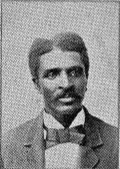George Washington Carver was born around 1864 (exact year unknown) to Mary Carver on the Moses Carver plantation in Diamond Grove, Missouri. George’s father was killed in an accident before his son’s birth, so Carver never met his father. George was raised from infancy on the plantation of Moses and Susan Carver, his mother having been lost in a slave raid from which baby George had been returned to the Carvers (Fishbein, 2007).
Carver’s childhood is well documented, so we won’t attempt to cover that aspect of his life in this biography. Readers interested in his developmental years may consult the many biographies of this well-respected scholar.
Imbued with a lifelong thirst for learning and detailed knowledge about flora and plants, Carver left Diamond Grove, where there were no schools for African Americans, to pursue his education. Though frail as a child, he moved to several parts of Missouri, Kansas, and Iowa before attending Simpson College in Indianola, Iowa, to study piano and painting. At Simpson College, art instructor Etta Budd recognized Carver’s talent with plants and convinced him to pursue a degree in agriculture. With Budd’s father being the head of the Department of Horticulture at Iowa State College of Agricultural and Mechanic Arts (now Iowa State University), Carver became the first Black student to enroll at the college. During his time at ISC, evidence suggests that he lived on campus in the servant’s quarters in North Hall. After Carver completed his bachelor’s degree in 1894, Professors Joseph Budd and Louis Pammel encouraged him to pursue a graduate degree. Carver was appointed as a member of ISC’s faculty, becoming Iowa State’s first African American faculty member. Then, following attainment of his M.S. in Agricultural Science in 1896, he was invited by Booker T. Washington to work at the Tuskegee Institute. Developing 325 products from peanuts and hundreds of other products from other plants native to the South, Carver’s work gained international reputation.
Passing away in 1948, he received many honors including: the Roosevelt Medal for Outstanding Contribution to Southern Agriculture in 1939; a museum dedicated to him at Tuskegee in 1941; the establishment of the George Washington Carver National Monument in Diamond Grove, the first national monument dedicated to an African American and a non-president, in 1943; a park named after him in Winterset, Iowa, where Carver lived in 1888, one hundred years later in 1988; an honorary Doctor of Humane Letters from Iowa State University in 1994; and being inducted into the U.S.D.A.’s Hall of Heroes in 2000. The plaque at the George Washington Carver National Monument in Diamond Grove reads as follows: “Within this area by act of Congress of July 14, 1943, is preserved the birthplace of George Washington Carver who rose from slavery to become a distinguished scientist and a great force in creating racial understanding.”
Iowa State College Thesis Title: Plants as modified by man (bachelor’s thesis), 1894
Sources
Photo Credit: The Bomb
Fishbein, Toby. (2007). The legacy of George Washington Carver. Published for the George Washingtopn Carver All-University Celebration. Iowa State University. Internet Archive. Accessed 30 April 2023. https://web.archive.org/web/20120320224324/http://www.lib.iastate.edu/spcl/gwc/bio.html
https://digitalcollections.lib.iastate.edu/islandora/object/isu%3ACarver
